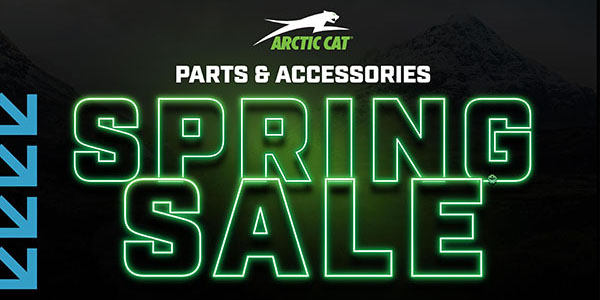It’s as enjoyable as hitting your finger with a hammer. Your heart races faster than the paparazzi’s camera flashes at a Lindsey Lohan court appearance. The red in your face exposes your discomfort. Your mouth feels as dry as the Mojave. This is it the sum of your fears. You’ve just been hit with an objection you don’t know how to handle.
We’ve talked in previous columns about how general strategies like leveraging intrinsic/extrinsic congruity, using persuasive psychology like reciprocity and ingratiation, and employing language devices like permission questions, provocative questions and reducing your use of absolutes can go a long way down the road to helping you handle objections. We’ve also talked about how the use of what I call “sales aikido” can help you capture the momentum of the conversation and use that energy to help move you closer to an agreement with the customer.
Now, let’s look at our tried and true communication pattern that has the enduring qualities of a Yamaha V-Max. It is what we call the “ART” of communication. This is simply an acronym for: acknowledge, respond, transition.
Acknowledge
When you get a tough question or objection, the first thing you can do is let the customer know that you’ve heard his position. The next thing you want to do is regain control of the conversation and psychologically prepare your customer to hear your response. You can do all of this with a simple acknowledgement statement. Some examples:
• “I hear you, I thought the same thing, but I found out some things that changed my mind …”
• “I understand completely. That’s exactly why I’m making this suggestion for you …”
• “I know how you feel, I felt the same way, but I found out some things that changed my mind, and they might change yours …”
Pick two and drill them until you have achieved unconscious competency. This means so you can act without thinking. You want to have these down so well, being struck by a comet couldn’t take you off point. Putting you in control, preparing your target (your customer) mentally and buying you time to think, acknowledgement statements are key to your rebuttal success.
Respond
In this part of the model what you want to do is really form your “argument” with logic, reason and examples of why the customer should take you up on your suggestions. I like using just a handful; three is the perfect number, and organizing them in ascending order of importance. For example, if responding to someone who says, “I can get it cheaper somewhere else …” after your acknowledgement statement, you might say something along the lines of:
• “I can guarantee that if all you’re looking for is a cheap price; you will be able to buy this motorcycle for less somewhere else. But if you’re really looking for a great dealership experience, there’s no better choice than our store.”
• “We’re a gold star and shield award winning dealership, so you know when we say we’re good it’s not just a matter of opinion.”
• “We’re open seven days a week, so we’re here when you need us.”
• “And finally the most compelling reason to do business with us is that our salespeople give their customers their personal cell phone so you always have a contact, whenever you have a question.”
For me, those responses form a solid argument as to why to do business with this store. Responses to objections are really subjective, meaning you might find some more desirable than me, but here are some things to keep in mind. Your objection rebuttals should be:
• Pithy: defined as concise and full of meaning.
• Including a customer value statement, i.e. it should answer the question, “What’s in it for them?”
• Did I mention pithy?
Here are some other great ideas for building compelling responses. You won’t use these with every point you make, but like ingredients in a terrific marinara sauce, you’ll be able to pick and choose to your taste.
Use numbers and statistics whenever possible: “The 2.3 pound counter balancers remove 90 percent of the primary shaking forces from this engine. So you can feel the heart and soul of this V-Twin, while not becoming vibration fatigued.” Numbers have the magical ability to skyrocket your credibility. I’m not saying motorcycle and their related stuff should be sold only by the numbers. I’m saying that by adding these sorts of responses to your rebuttals, you will enjoy improved credibility and will move customers to your position.
Use third party references: Another way of making a sound argument is to cite a qualified third party. Another expert (service manager, long-time rider or racing figure) or a third party, well-regarded, consumer publication (Motorcycle Consumer News). This leverages the persuasion principle of authority and the judgmental heuristic (mental shortcut) that we defer to experts.
Use information that can’t be found in the brochure: Anyone can read the brochure, and customers crawl through those things, so if you really want to mount an effective objection rebuttal, use information not found in the brochure. Use information from your conversations with other customers, your experience, conversations with service personnel or your reading outside high quality publications. When a customer says to you, “That’s interesting, I’ve never heard that before!” you’re in.
Transition statements
These statements move the conversation on to the next part of your conversation. Not using a transition statement will ensure you’re caught in the quagmire of your objection. You need to control the conversation and move it to its next meaningful point. Some examples might be:
• “What else would you like to know?”
• “Do you have any other questions?”
• “Another thing you should consider is …”
My favorite transition statement; however, is simply, “What do you think?” The reason is that it is really a trial close. When you ask this question, you’re really asking for the customer’s opinion. If they really reply in the negative, you know you have more work to do or that this motorcycle or product isn’t right for them. If they respond in the affirmative, “I like it!” I’m taking a swing and asking for the business.
Communication and objection handling are art forms, and you’ll be like Picasso when you master the ART of objection rebuttals.













